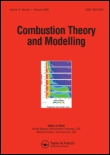
COMBUSTION THEORY AND MODELLING
Scope & Guideline
Pioneering Insights in Chemical Engineering and Energy
Introduction
Aims and Scopes
- Theoretical Modelling of Combustion Phenomena:
The journal emphasizes the development and application of theoretical models to understand combustion mechanisms, including chemical kinetics, flame dynamics, and turbulence interactions. - Computational Fluid Dynamics (CFD) in Combustion:
A significant portion of the research involves advanced computational techniques such as Large Eddy Simulation (LES) and Conditional Source-term Estimation (CSE) to simulate complex combustion scenarios. - Experimental Investigations in Combustion Science:
The journal publishes experimental studies that validate theoretical models and computational predictions, providing insights into real-world combustion behavior. - Fuel Characterization and Alternative Fuels Research:
Research on various fuels, including biofuels, synthetic fuels, and waste-derived fuels, is a consistent focus, addressing the need for sustainable energy solutions. - Soot and Emissions Modelling:
The journal addresses the formation and reduction of soot and emissions in combustion systems, contributing to cleaner combustion technologies. - Flame Interaction and Stability Analysis:
Studies on flame stability, interactions with solid boundaries, and the effects of environmental conditions are crucial for understanding combustion in different settings.
Trending and Emerging
- Integration of Machine Learning in Combustion Modelling:
There is a growing trend toward using machine learning techniques for reducing reaction mechanisms and predicting combustion behavior, indicating a shift towards data-driven approaches in combustion science. - Advanced Turbulence Modelling Techniques:
Emerging studies are increasingly focusing on sophisticated turbulence models such as LES and hybrid approaches that combine different modelling strategies for improved accuracy in turbulent combustion simulations. - Research on Alternative and Renewable Fuels:
A noticeable increase in studies addressing the combustion of alternative fuels, including hydrogen and biofuels, reflects the urgency of transitioning to sustainable energy sources. - Flame Dynamics and Control Mechanisms:
Research on the dynamics of flame interactions, stability, and control methods is gaining traction, highlighting the importance of managing combustion for efficiency and safety. - Thermal Radiation Effects in Combustion:
Emerging interest in the role of thermal radiation in combustion processes signifies a deeper exploration of its impact on flame behavior and emissions.
Declining or Waning
- Traditional Chemical Kinetics:
Research focusing solely on traditional chemical kinetics without integration into larger combustion models has decreased, as newer methodologies are developed that account for complex interactions. - Low-Temperature Combustion Studies:
The frequency of papers dedicated to low-temperature combustion mechanisms has waned, potentially overshadowed by the growing interest in high-efficiency combustion strategies. - Simplistic Soot Modelling Approaches:
Older models that do not incorporate advanced soot formation mechanisms are becoming less common, as the field moves towards more sophisticated and accurate soot prediction methods. - One-Dimensional Flame Studies:
Research centered around one-dimensional flame models is appearing less frequently, as the focus shifts towards more complex multi-dimensional simulations that better represent real combustion scenarios.
Similar Journals
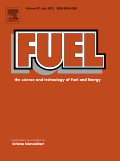
Fuel
Driving Research for a Sustainable TomorrowFuel is a premier international journal published by Elsevier Science Ltd, showcasing critical advancements and insights in the fields of chemical engineering, energy engineering, power technology, and organic chemistry. With a significant history dating back to 1922 and continuous publication from 1970 to 2025, Fuel holds an impressive position in the academic community, reflected in its top-tier rankings—Q1 in multiple categories including Fuel Technology and Chemical Engineering for the year 2023. This journal is dedicated to exploring innovative research and application of fuel technologies, driving forward the dialogue on sustainable energy solutions. Researchers and professionals alike will find Fuel to be an essential resource, providing access to high-impact articles that contribute to advancements in methodologies and applications, while navigating the complexities of global energy challenges.
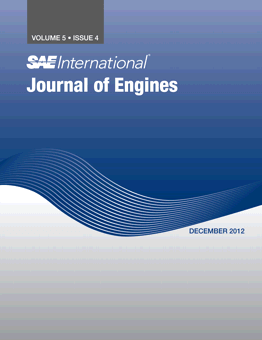
SAE International Journal of Engines
Unleashing Insights into Engine Efficiency and EmissionsSAE International Journal of Engines, published by SAE International, serves as a leading platform in the field of automotive engineering and fuel technology. Established in 2008, this journal has quickly gained recognition, achieving a Q2 ranking in Automotive Engineering and a Q3 ranking in Fuel Technology as of 2023. With the journal's ongoing commitment to advancing the understanding of engine technologies, it encompasses a diverse range of topics including engine performance, emissions, fuels, and innovative technologies driving the automotive industry. Researchers and professionals can benefit from the high-quality peer-reviewed articles that the journal features, while the comprehensive content serves as an invaluable resource for students engaged in automotive studies. Although it does not currently offer open access, the journal's credibility is further reinforced by its respectable Scopus rankings, indicating its significant impact within the academic community. For anyone seeking to stay at the forefront of engine research and automotive advancements, the SAE International Journal of Engines is an essential resource.
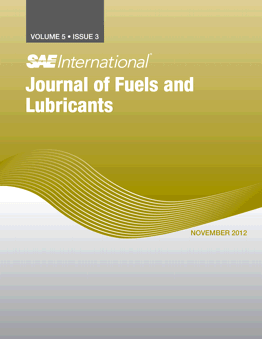
SAE International Journal of Fuels and Lubricants
Transforming Insights into Industry PracticesWelcome to the SAE International Journal of Fuels and Lubricants, a leading peer-reviewed publication dedicated to advancing knowledge in the crucial fields of fuel technology and lubrication science. Published by SAE International, this journal serves as a vital resource for researchers, industry professionals, and students engaged in the study and application of innovative fuels and lubricants. With an impact factor indicative of its importance, the journal is ranked in the Q3 category for both Fuel Technology and Pollution, highlighting its critical role in addressing global energy and environmental challenges. Covering a range of topics from fundamental research to practical applications, the journal not only contributes to academic discourse but also serves to inform industry practices. Our publication spans the converged years from 2009 to 2024, reflecting a commitment to continuous scholarly contribution. While currently operating under a traditional access model, the journal aims to foster an inclusive environment for discourse in the rapidly evolving fields of energy and environmental science.

Journal of Thermal Science and Technology
Fostering collaboration and innovation in thermal science.Journal of Thermal Science and Technology, published by the Japan Society of Mechanical Engineers, is a distinguished open-access journal that has been serving the academic community since its inception in 2009. With a commitment to disseminating cutting-edge research in the realms of thermal science and its engineering applications, the journal has established itself as an essential resource for researchers, professionals, and students alike. Holding important quartile rankings in 2023, including Q3 in Atomic and Molecular Physics, Engineering (miscellaneous), and Materials Science (miscellaneous), this journal showcases high-impact studies that contribute to the advancement of technology and materials engineering. Open access since 2021, it aims to enhance the visibility and accessibility of critical research findings, thus fostering innovation and collaboration within the global scientific community. The journal’s dedicated editorial board actively seeks to publish novel insights that not only engage with existing challenges but also inspire future developments in thermal science and technology.
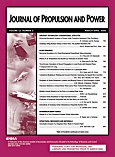
JOURNAL OF PROPULSION AND POWER
Elevating Research in Propulsion and Power TechnologiesJOURNAL OF PROPULSION AND POWER, published by the American Institute of Aeronautics and Astronautics, is a premier peer-reviewed journal dedicated to the advancement of knowledge in the fields of aerospace engineering, mechanical engineering, and fuel technology. With an impressive impact factor and ranked in the Q1 and Q2 categories for various relevant fields, the journal serves as a vital resource for researchers, professionals, and students alike who are looking to stay abreast of the latest innovations and breakthroughs in propulsion systems and power generation methodologies. Established in 1985, the journal covers a wide range of topics, ensuring a comprehensive understanding of propulsion technologies from atmospheric to space applications. Its robust Scopus rankings highlight its significance in the academic community, establishing it as a leading forum for sharing pivotal research findings and fostering collaborative dialogues that drive the aerospace industry forward. Located in Reston, Virginia, the journal does not currently offer open access options, yet it remains accessible to a vast audience via academic institutions and libraries. As we move further into the 21st century, the JOURNAL OF PROPULSION AND POWER continues to be an indispensable tool for the exploration and evolution of propulsion and power systems.

Propulsion and Power Research
Leading the Charge in Open Access Research.Propulsion and Power Research, published by KEAI PUBLISHING LTD, is a leading Open Access journal that has been advancing the field of propulsion and power systems since its inception in 2012. With its commitment to fostering scientific discourse and innovation, the journal has gained a prominent position within academia, achieving a Q1 ranking in multiple categories such as Aerospace Engineering, Automotive Engineering, and Fluid Flow and Transfer Processes as of 2023. With an impressive ranking of #18 out of 153 in Aerospace Engineering and consistent recognition in the Scopus rankings, the journal explores critical advancements and research findings that propel the industry forward. As an Open Access publication, it ensures that groundbreaking research is readily available to a broad audience, enhancing collaboration between researchers, practitioners, and students. The journal's scope encompasses a wide range of topics within propulsion and energy solutions, making it an essential resource for anyone keen on discovering significant developments in this dynamic field.

ATOMIZATION AND SPRAYS
Connecting Researchers in Fluid Mechanics and BeyondATOMIZATION AND SPRAYS, published by BEGELL HOUSE INC, stands at the forefront of research in the dynamic field of chemical engineering, particularly focusing on the intricate processes of atomization and the mechanics of droplet dynamics. Established in 1996, this prestigious journal aims to disseminate innovative findings and methodologies that drive advancements in applications ranging from spray technologies in industrial processes to environmental technology and energy conversion systems. With a current Impact Factor that reflects its significance within the community—ranked in the Q3 quartile—it serves as a comprehensive resource for researchers, professionals, and students eager to deepen their understanding of fluid mechanics and spray applications. Though not an open-access publication, it provides critical insights and a platform for scholarly communication and exchange in its converged years, fostering collaboration and innovation within the domain.
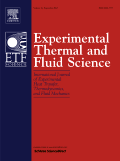
EXPERIMENTAL THERMAL AND FLUID SCIENCE
Pioneering discoveries in thermal and fluid engineering.EXPERIMENTAL THERMAL AND FLUID SCIENCE is a prestigious academic journal published by Elsevier Science Inc, dedicated to advancing the fields of thermal and fluid sciences. With a strong focus on innovative experimental research, it plays a crucial role in disseminating new knowledge and techniques across multiple domains, including Aerospace Engineering, Chemical Engineering, Fluid Flow and Transfer Processes, Mechanical Engineering, and Nuclear Engineering. Holding a notable impact factor and ranking in the Q1 quartile across these categories since 2023, the journal is recognized for its high-quality contributions, which appeal to a diverse audience of researchers, industry professionals, and students alike. Additionally, with dedicated coverage from its inception in 1988 to projections extending through 2025, EXPERIMENTAL THERMAL AND FLUID SCIENCE provides a vital platform for sharing advancements in experimental techniques and findings that shape the future of engineering and applied sciences.
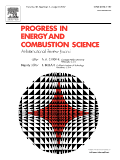
PROGRESS IN ENERGY AND COMBUSTION SCIENCE
Fueling the future with cutting-edge research.PROGRESS IN ENERGY AND COMBUSTION SCIENCE, published by PERGAMON-ELSEVIER SCIENCE LTD, stands as a premier journal in the realms of energy engineering and fuel technology, with an impressive impact factor and recognition across multiple scientific disciplinary matrices. Since its inception in 1975 and continuing through 2024, this esteemed publication has contributed significantly to the advancement of knowledge in energy resources, combustion processes, and their applications in modern technology. With a robust ranking of Q1 in key categories such as Chemical Engineering, Energy Engineering and Power Technology, and Fuel Technology, the journal consistently showcases high-quality research that influences both academia and industry. Researchers, professionals, and students benefit from its rigorous peer-reviewed articles, which foster a deeper understanding of energy-related challenges and innovations. Although it is not an Open Access outlet, its relevance and contribution to the scientific community are undeniable, making it a vital resource for anyone engaged in the pursuit of sustainable energy solutions.

Combustion and Flame
Connecting Scholars in the World of CombustionCombustion and Flame is a premier academic journal published by Elsevier Science Inc, dedicated to advancing the field of combustion science. Since its inception in 1957, this journal has consistently provided a platform for rigorous research and groundbreaking discoveries in the realms of Chemical Engineering, Chemistry, and Energy Engineering, illustrating a significant Q1 ranking across multiple categories, including Fuel Technology and Physics. With an impressive Scopus ranking, comprising the top 10% in fields such as General Physics and Astronomy, and General Chemical Engineering, Combustion and Flame serves as a critical resource for researchers, professionals, and students aiming to explore the complexities of combustion phenomena and their applications. Although it does not offer open access, the journal is known for its comprehensive articles and innovative research papers, fostering scholarly dialogue and the development of emerging technologies. The journal aims to connect researchers globally, ensuring that important findings are shared and disseminated effectively.